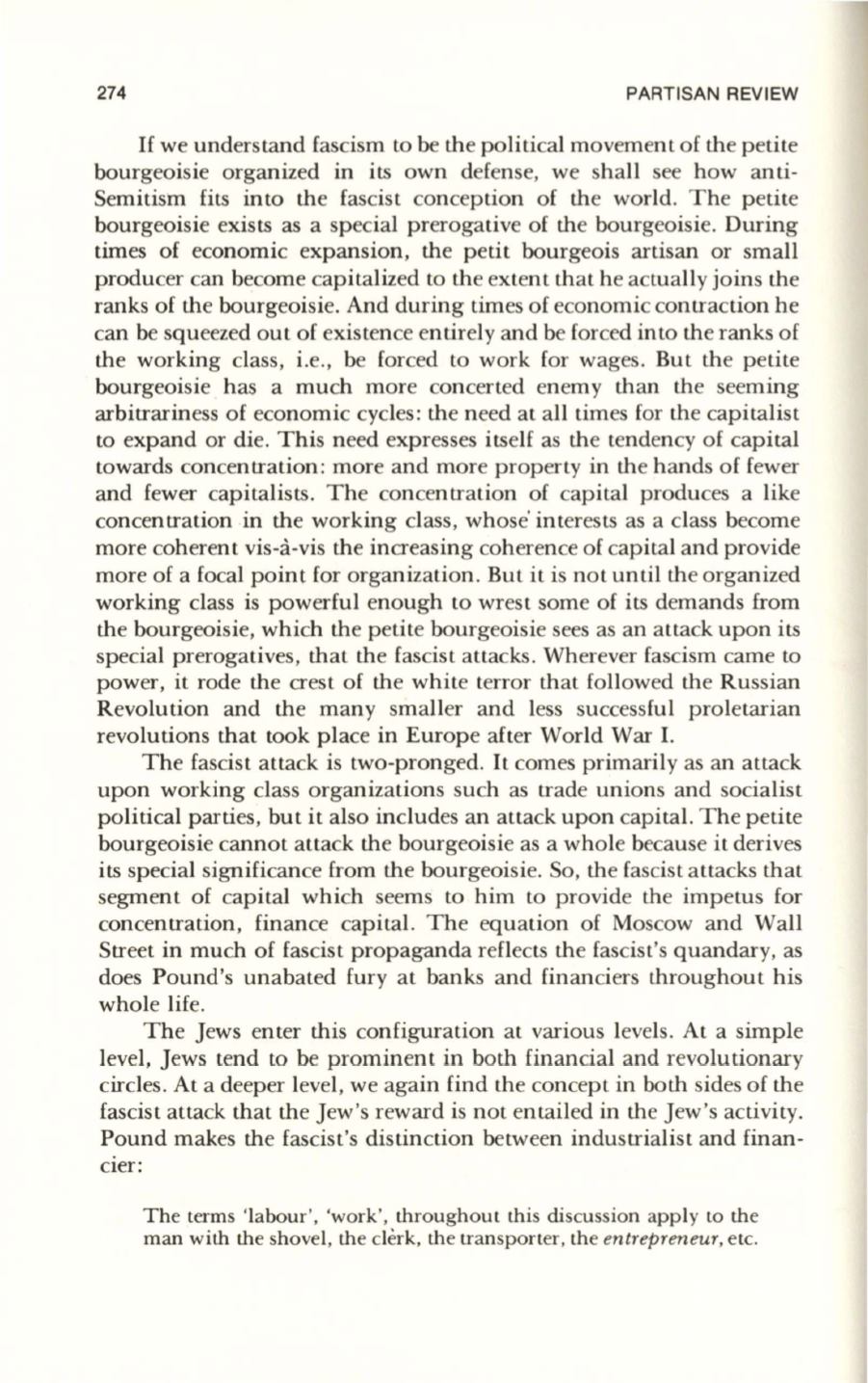
274
PARTISAN REVIEW
If
we understand fascism to be the political movement of the petite
bourgeoisie organized in its own defense, we shall see how anti–
Semitism fits into the fascist conception of the world. The petite
bourgeoisie exists as a special prerogative of the bourgeoisie. During
times of economic expansion, the petit bourgeois artisan or small
producer can become capitalized to the extent that he actually joins the
ranks of the bourgeoisie. And during times of economic contraction he
can be squeezed out of existence entirely and be forced into the ranks of
the working class, i.e., be forced to work for wages. But the petite
bourgeoisie has a much more concerted enemy than the seeming
arbitrariness of economic cycles: the need at all times for the capitalist
to expand or die. This need expresses itself as the tendency of capital
towards concentration: more and more property in the hands of fewer
and fewer capitalists. The concentration of capital produces a like
concentration in the working class, whose' interests as a class become
more coherent vis-a.-vis the increasing coherence of capital and provide
more of a focal point for organization. But it is not until the organized
working class is powerful enough to wrest some of its demands from
the bourgeoisie, which the petite bourgeoisie sees as an attack upon its
special prerogatives, that the fascist attacks. Wherever fascism came to
power, it rode the crest of the white terror that followed the Russian
Revolution and the many smaller and less successful proletarian
revolutions that took place in Europe after World War
I.
The fascist attack is two-pronged.
It
comes primarily as an attack
upon working class organizations such as trade unions and socialist
political parties, but it also includes an attack upon capital. The petite
bourgeoisie cannot attack the bourgeoisie as a whole because it derives
its special significance from the bourgeoisie. So, the fascist attacks that
segment of capital which seems to him to provide the impetus for
concentration, finance capital. The equation of Moscow and Wall
Street in much of fascist propaganda reflects the fascist 's quandary, as
does Pound's unabated fury at banks and financiers throughout his
whole life.
The Jews enter this configuration at various levels. At a simple
level, Jews tend to be prominent in both financial and revolutionary
circles. At a deeper level, we again find the concept in both sides of the
fascist attack that the Jew's reward is not entailed in the Jew 's activity.
Pound makes the fascist 's distinction between industrialist and finan–
cier:
The terms 'labour', 'work', throughout this discussion apply to the
man with the shovel, the clerk, the transporter, the
entrepreneur,
etc.


